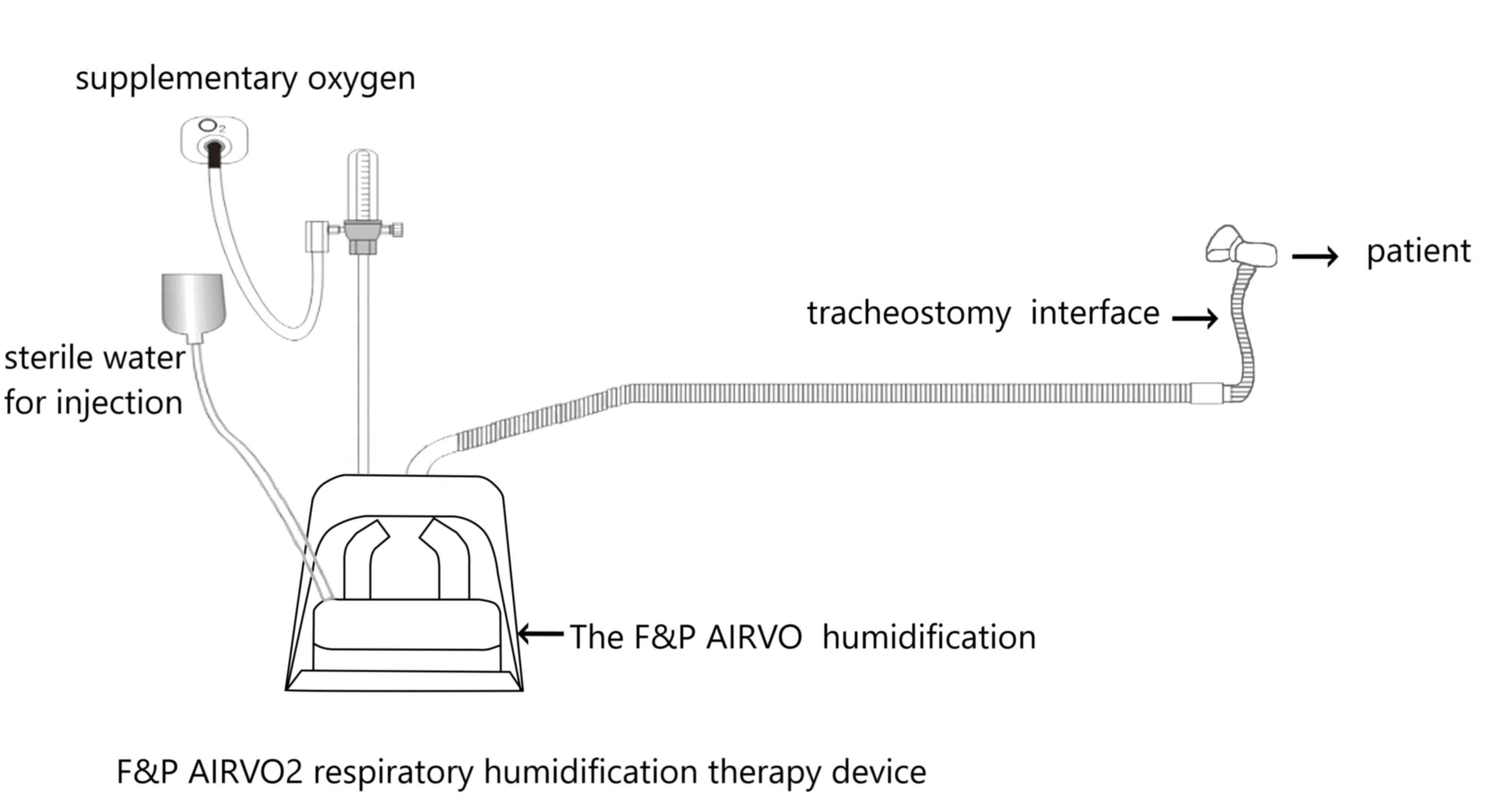|
1
|
American Association for Respiratory Care
Restrepo RD Walsh BK: Humidification during invasive and
noninvasive mechanical ventilation: 2012. Respir Care 57: 782-788,
2012.
|
|
2
|
O'Driscoll BR, Howard LS, Earis J and Mak
V: British Thoracic Society Emergency Oxygen Guideline Group; BTS
Emergency Oxygen Guideline Development Group. BTS guideline for
oxygen use in adults in healthcare and emergency settings. Thorax.
72(Suppl 1):ii1–ii90. 2017.PubMed/NCBI View Article : Google Scholar
|
|
3
|
Corley A, Edwards M, Spooner AJ, Dunster
KR, Anstey C and Fraser JF: High-flow oxygen via tracheostomy
improves oxygenation in patients weaning from mechanical
ventilation: A randomised crossover study. Intensive Care Med.
43:465–467. 2017.PubMed/NCBI View Article : Google Scholar
|
|
4
|
Soto-Ruiz KM, Peacock WF and Varon J: The
men and history behind the Venturi mask. Resuscitation. 82:244–246.
2011.PubMed/NCBI View Article : Google Scholar
|
|
5
|
Knaus WA, Draper EA, Wagner DP and
Zimmerman JE: APACHE II: A severity of disease classification
system. Crit Care Med. 13:818–829. 1985.PubMed/NCBI
|
|
6
|
Yancy CW, Jessup M, Bozkurt B, Butler J,
Casey DE Jr, Drazner MH, Fonarow GC, Geraci SA, Horwich T, Januzzi
JL, et al: ACCF/AHA guideline for the management of heart failure:
A report of the American College of Cardiology Foundation/American
Heart Association Task Force on Practice Guidelines. J Am Coll
Cardiol. 62:e147–e239. 2013.PubMed/NCBI View Article : Google Scholar
|
|
7
|
Del Sorbo L, Vendramin A and Mehta S: High
flow oxygen therapy in adult critically ill patients. Minerva
Anestesiol. 83:402–411. 2017.PubMed/NCBI View Article : Google Scholar
|
|
8
|
Lopez-Vidriero MT, Charman J, Keal E, De
Silva DJ and Reid L: Sputum viscosity: Correlation with chemical
and clinical features in chronic bronchitis. Thorax. 28:401–408.
1973.PubMed/NCBI View Article : Google Scholar
|
|
9
|
Kalil AC, Metersky ML, Klompas M,
Muscedere J, Sweeney DA, Palmer LB, Napolitano LM, O'Grady NP,
Bartlett JG, Carratalà J, et al: Management of adults with
hospital-acquired and ventilator-associated pneumonia: 2016
clinical practice guidelines by the infectious diseases society of
america and the american thoracic society. Clin Infect Dis.
63:e61–e111. 2016.PubMed/NCBI View Article : Google Scholar
|
|
10
|
Stéphan F, Barrucand B, Petit P,
Rézaiguia-Delclaux S, Médard A, Delannoy B, Cosserant B, Flicoteaux
G, Imbert A, Pilorge C, et al: High-flow nasal oxygen vs
noninvasive positive airway pressure in hypoxemic patients after
cardiothoracic surgery: A randomized clinical trial. JAMA.
313:2331–2339. 2015.PubMed/NCBI View Article : Google Scholar
|
|
11
|
Miguel-Montanes R, Hajage D, Messika J,
Bertrand F, Gaudry S, Rafat C, Labbé V, Dufour N, Jean-Baptiste S,
Bedet A, et al: Use of high-flow nasal cannula oxygen therapy to
prevent desaturation during tracheal intubation of intensive care
patients with mild-to-moderate hypoxemia. Crit Care Med.
43:574–583. 2015.PubMed/NCBI View Article : Google Scholar
|
|
12
|
Delorme M, Bouchard PA, Simon M, Simard S
and Lellouche F: Effects of high-flow nasal cannula on the work of
breathing in patients recovering from acute respiratory failure.
Crit Care Med. 45:1981–1988. 2017.PubMed/NCBI View Article : Google Scholar
|
|
13
|
Papazian L, Corley A, Hess D, Fraser JF,
Frat JP, Guitton C, Jaber S, Maggiore SM, Nava S, Rello J, et al:
Use of high-flow nasal cannula oxygenation in ICU adults: A
narrative review. Intensive Care Med. 42:1336–1349. 2016.PubMed/NCBI View Article : Google Scholar
|
|
14
|
Díaz-Lobato S, Folgado MA, Chapa A and
Mayoralas Alises S: Efficacy of high-flow oxygen by nasal cannula
with active humidification in a patient with acute respiratory
failure of neuromuscular origin. Respir Care. 58:e164–e167.
2013.PubMed/NCBI View Article : Google Scholar
|
|
15
|
Hughes J and Doolabh A: Heated,
humidified, high-flow nasal oxygen usage in the adult Emergency
Department. Australas Emerg Nurs J. 19:173–178. 2016.PubMed/NCBI View Article : Google Scholar
|
|
16
|
McFadden ER Jr, Pichurko BM, Bowman HF,
Ingenito E, Burns S, Dowling N and Solway J: Thermal mapping of the
airways in humans. J Appl Physiol. 58:564–570. 1985.PubMed/NCBI View Article : Google Scholar
|
|
17
|
Lacherade JC, Auburtin M, Cerf C, Van de
Louw A, Soufir L, Rebufat Y, Rezaiguia S, Ricard JD, Lellouche F,
Brun-Buisson C and Brochard L: Impact of humidification systems on
ventilator- associated pneumonia: A randomized multicenter trial.
Am J Respir Crit Care Med. 172:1276–1282. 2005.PubMed/NCBI View Article : Google Scholar
|
|
18
|
Cinnella G, Giardina C, Fischetti A, Lecce
G, Fiore MG, Serio G Carravetta G, Dambrosio M and Fiore T: Airways
humidification during mechanical ventilation. Effects on
tracheobronchial ciliated cellsmorphology. Minerva Anestesiol.
71:585–593. 2005.(In English, Italian). PubMed/NCBI
|
|
19
|
Jiang M, Song JJ, Guo XL, Tang YL and Li
HB: Airway humidification reduces the inflammatory response during
mechanical ventilation. Respir Care. 60:1720–1728. 2015.PubMed/NCBI View Article : Google Scholar
|
|
20
|
Roux NG, Plotnikow GA, Villalba DS,
Gogniat E, Feld V, Ribero Vairo N, Sartore M, Bosso M, Scapellato
JL, Intile D, et al: Evaluation of an active humidification system
for inspired gas. Clin Exp Otorhinolaryngol. 8:69–75.
2015.PubMed/NCBI View Article : Google Scholar
|
|
21
|
Campbell RS, Davis K Jr, Johannigman JA
and Branson RD: The effects of passive humidifier dead space on
respiratory variables in paralyzed and spontaneously breathing
patients. Respir Care. 45:306–312. 2000.PubMed/NCBI
|












